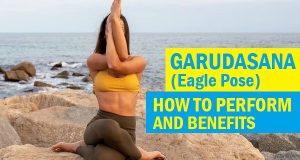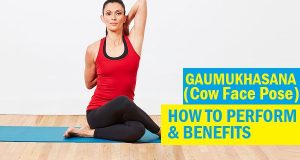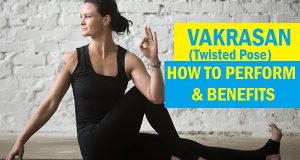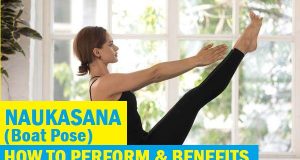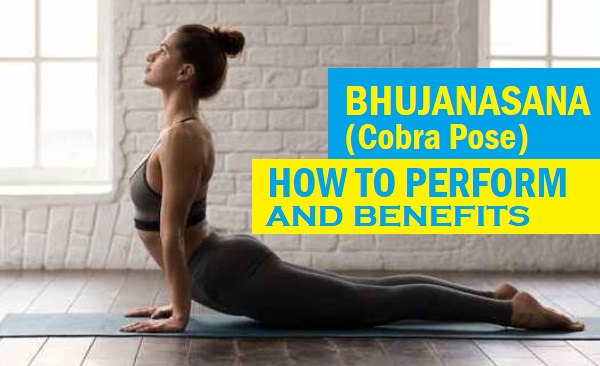
Bhujangasana, also known as Cobra Stretch or Cobra Pose, is a rejuvenating yoga pose that offers a range of physical and mental benefits. This gentle backbend is widely practiced in yoga for its ability to strengthen the spine, improve flexibility, and promote overall well-being. In this article, we’ll explore how to perform Bhujangasana correctly, its myriad benefits, and important precautions to consider before practicing it.
Understanding Bhujangasana (Cobra Stretch)
Bhujangasana gets its name from the Sanskrit words “bhujanga” (snake) and “asana” (pose). As the name suggests, the pose resembles the raised hood of a cobra. This asana is often incorporated into yoga sequences to counteract the effects of prolonged sitting and poor posture.
How to Perform Bhujangasana
Preparatory Poses
Before attempting Bhujangasana, it’s beneficial to perform preparatory poses that warm up the body and stretch the spine. Poses like Child’s Pose and Cat-Cow can help you ease into the backbend.
Step-by-Step Instructions
Lie Down: Begin by lying flat on your stomach, legs extended, and the tops of your feet touching the ground.
Place Hands: Position your hands beneath your shoulders, fingers spread wide and pointing forward.
Engage Core: Press the tops of your feet and thighs into the mat. Engage your core muscles to support your lower back.
Inhale and Lift: Inhale deeply and slowly start to lift your head, chest, and upper abdomen off the mat. Use the strength of your back muscles, not your hands, to lift.
Elbows Bent: Keep your elbows slightly bent and close to your body. Here, keep your shoulders away from your ears.
Gaze Forward: Lift your gaze, directing it forward without straining your neck.
Hold and Breathe: Hold the pose for several breaths, breathing deeply and evenly.
Exhale and Release: To release, exhale and slowly lower your chest and head back to the mat.
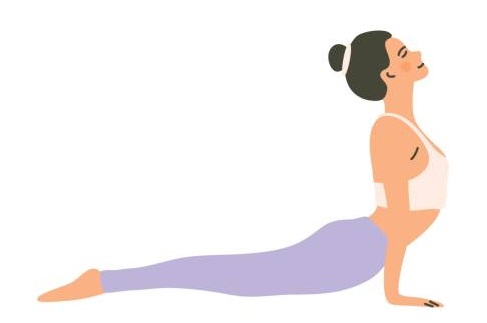
What Are the Top 8 Health Benefits of Bhujangasana?
Bhujangasana, also known as Cobra Pose, is a widely practiced yoga posture that offers a plethora of health benefits. This rejuvenating backbend is not only a part of yoga routines but also serves as an essential exercise for improving physical, mental, and spiritual well-being. Let’s know about the remarkable health benefits that Bhujangasana brings to the table:
Increases Flexibility
Bhujangasana involves a gentle backward bend, which stretches and extends various parts of the body. This stretching action creates movement in muscles, promoting flexibility. A flexible body can greatly impact your posture, allowing you to stand and sit with more confidence. With regular practice, Bhujangasana gradually enhances the flexibility of your spine, shoulders, and abdomen.
Boosts Digestion
Currently, digestive issues have become quite common due to many factors that we experience in our day-to-day life. Many people experience problems like constipation and heartburn, which can disrupt their daily lives. Bhujangasana directly targets the abdomen, facilitating better gastrointestinal functioning. The stretching and compression of the abdomen during the pose stimulate the digestive organs, promoting the secretion of digestive fluids. This, in turn, enhances the absorption of nutrients from food and promotes overall digestive health.
Unblocks Chakras
Bhujangasana not only benefits the physical body but also plays a significant role in balancing the body’s energy centers, known as chakras. One of these chakras is the Kundalini Chakra, situated at the base of the spine. The practice of Bhujangasana activates the Kundalini Chakra, allowing energy to flow smoothly throughout the body. When the chakras are unblocked and energy flows harmoniously, you experience heightened vitality, mental clarity, and an increased ability to achieve your goals.
Reduces Body Fat
Yoga, including Bhujangasana, can be a potent tool to improve metabolism and increase calorie burn. This particular pose targets the abdomen, buttocks, and other areas that are engaged and stretched during its execution. Consistent practice not only helps tone these muscle groups but also contributes to the reduction of body fat. As you engage multiple muscle groups, your body becomes more efficient at burning calories, supporting healthy weight management.
Improves Blood Circulation
Proper blood circulation is vital for the efficient distribution of oxygen and nutrients throughout the body. Enhanced blood circulation supports rapid wound healing, glowing skin, cognitive sharpness, and a healthy cardiovascular system. Bhujangasana serves as a catalyst for improved blood circulation. The pose encourages the expansion and contraction of the chest, facilitating optimal oxygen exchange in the lungs. This, in turn, enhances oxygen-rich blood flow, nourishing cells and tissues while aiding in the removal of waste products.
Reduces Respiratory Problems
The opening and expansion of the chest cavity during Bhujangasana have a positive impact on respiratory health. The pose helps unlock chest congestion and clear the passage for the heart and lungs. The stretching action elongates the chest, creating more space for the ribcage to expand during inhalation. This can provide relief for individuals with respiratory conditions like asthma. Bhujangasana’s therapeutic benefits include improved lung capacity, deeper breathing, and enhanced respiratory function.
Regulates Menstrual Problems
For individuals dealing with menstrual irregularities, Bhujangasana offers a potential solution. By directly engaging the abdominal region, this yoga pose contributes to regulating the menstrual cycle. Regular practice can aid in preventing delays in the menstrual cycle and reduce the likelihood of experiencing menstrual cramps. The pose promotes healthy blood flow to the pelvic region, which can lead to a more comfortable and pain-free menstrual period.
Strengthens Muscles
Bhujangasana is a dynamic yoga pose that engages multiple muscle groups. As you stretch and lift your upper body while maintaining a controlled breathing pattern, various muscles are activated. The pose specifically targets the biceps, triceps, and abdominal muscles. The lifting of the body’s weight through the shoulder, hands, and thighs also strengthens these muscle groups. Over time, regular practice leads to increased muscle strength and endurance, contributing to improved functional fitness.
Other Benefits
Apart from these core benefits, Bhujangasana brings about additional positive outcomes:
Elevates Mood: The practice of Bhujangasana stimulates the release of endorphins, promoting a sense of happiness and well-being.
Relieves Stress: The gentle backbend and controlled breathing help calm the nervous system, reducing stress and anxiety.
Soothes the Sciatic Nerve: Bhujangasana’s extension and stretching of the spine can alleviate discomfort associated with the sciatic nerve.
Maintains Posture: By strengthening the muscles responsible for maintaining proper posture, Bhujangasana helps prevent slouching and hunching.
Tones the Buttocks: The engagement of the gluteal muscles during the pose contributes to toning and strengthening the buttocks.
Incorporating Bhujangasana into your daily routine can lead to profound physical and mental transformation. As with any yoga practice, it’s essential to perform the pose correctly and mindfully, listening to your body’s cues and limitations. Whether you’re a beginner or an experienced practitioner, Bhujangasana offers a multitude of rewards for those seeking enhanced overall well-being.
Types of Bhujangasana (Cobra Pose)
Bhujangasana, also known as Cobra Pose, is a versatile yoga posture that offers multiple variations to cater to different levels of practitioners. Each variation of this beginner friendly yoga provides unique benefits and challenges, allowing individuals to customize their practice based on their abilities and needs. Let’s explore the various types of Bhujangasana and the distinctive features they bring to your yoga routine:
1. Saral Hasta Bhujangasana
Saral Hasta Bhujangasana, also known as the Classic Beginner Cobra Pose, serves as the foundational variation of this yoga posture. In this type, your pelvis remains in contact with the ground, and you use your hands to support and stretch your upper body. The alignment of the head and spine is a key focus in this pose.
To perform Saral Hasta Bhujangasana, follow these steps:
- Lie down on your stomach, with your legs extended and the tops of your feet resting on the mat.
- Place your hands on the mat, slightly ahead of your shoulders, with your fingers pointing forward.
- Press your palms firmly into the mat as you slowly lift your head, chest, and upper abdomen off the ground.
- Keep your elbows close to your body, and ensure your pelvis maintains contact with the mat.
- Gently arch your back while keeping your gaze forward, maintaining the alignment of your head and spine.
- Breathe steadily and hold the pose for a few breaths before releasing back to the mat.
2. Vakra Hasta Bhujangasana
Vakra Hasta Bhujangasana introduces a variation in hand placement, adding an element of challenge to the traditional Cobra Pose. In this type, your hands are not positioned at the same level as your shoulders. Instead, one hand is placed above the other, creating a diagonal alignment.
To practice Vakra Hasta Bhujangasana, follow these steps:
- Begin in the same starting position as the Saral Hasta Bhujangasana, lying on your stomach with your legs extended.
- Place your hands on the mat, but this time position one hand slightly higher than the other, forming a diagonal line.
- Press your palms into the mat and lift your upper body, engaging your core muscles for support.
- Arch your back gently, keeping your pelvis grounded and your gaze directed forward or slightly upward.
- Maintain the pose for several breaths, feeling the stretch in your chest and abdomen.
- Release the pose gradually, lowering your upper body back down to the mat.
3. Ardha Bhujangasana
Ardha Bhujangasana, also referred to as the Half Cobra Pose, offers a modified version of the traditional Cobra Pose. In this variation, you lift your upper body slightly while resting on your elbows. It is particularly beneficial for individuals who may find full Cobra Pose challenging.
Follow these steps to practice Ardha Bhujangasana:
- Begin by lying on your stomach with your legs extended and your chin resting on the mat.
- Place your palms on the mat, beside your chest and slightly ahead of your shoulders.
- Slowly lift your upper body off the mat by pressing your palms into the mat.
- Instead of fully extending your arms, rest on your elbows, keeping them beneath your shoulders.
- Arch your back gently, opening your chest while maintaining stability through your core.
- Hold the pose for a few breaths, focusing on elongating your spine and breathing deeply.
- Release the pose by lowering your upper body back down and resting on your chin.
Incorporating these variations of Bhujangasana into your yoga practice allows you to tailor your experience to your comfort level and goals. Whether you’re a beginner seeking a foundational stretch or an experienced practitioner aiming to deepen your backbend, these variations provide a spectrum of benefits for overall flexibility, posture improvement, and enhanced well-being.
Precautions and Considerations
Pregnancy and Medical Conditions
Pregnant individuals should avoid deep backbends like Bhujangasana. Additionally, people with herniated discs, recent surgeries, or chronic back issues should consult a healthcare professional before attempting this pose.
Modifications for Beginners
If you’re new to yoga or have limited flexibility, you can modify Bhujangasana by keeping your elbows slightly bent and lifting your chest only a few inches off the mat. Focus on engaging the back muscles and maintaining a comfortable stretch.
Bhujangasana, the Cobra Stretch, is a powerful yet accessible yoga pose that offers a host of benefits. By incorporating this pose into your regular practice, you can strengthen your back, improve flexibility, and enhance your overall physical and mental well-being. Remember to perform the pose mindfully, listening to your body, and making necessary modifications based on your individual needs.
FAQs
Q: Can Bhujangasana help with stress relief?
A: Yes, Bhujangasana stretches the chest and abdomen, promoting relaxation and stress relief.
Q: How long should I hold Bhujangasana?
A: Aim to hold the pose for 15-30 seconds while maintaining steady breath.
Q: Can Bhujangasana improve digestion?
A: Yes, the pose stimulates abdominal organs and can support healthy digestion.
Q: Is Bhujangasana suitable for individuals with neck injuries?
A: Individuals with neck injuries should avoid excessive strain on the neck and focus on lifting the chest gently.
Q: Can I perform Bhujangasana during menstruation?
A: It’s best to avoid deep backbends like Bhujangasana during menstruation. Go for gentler poses that provide comfort and ease.
 Tips and Beauty Site about Skin care, Hair care, Health, weight loss and lifestyle tips
Tips and Beauty Site about Skin care, Hair care, Health, weight loss and lifestyle tips


